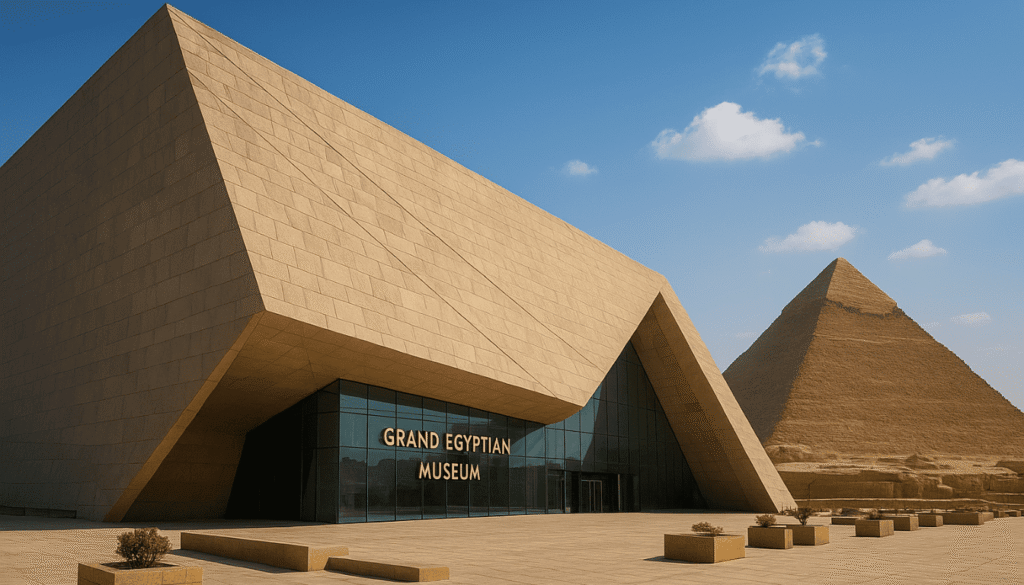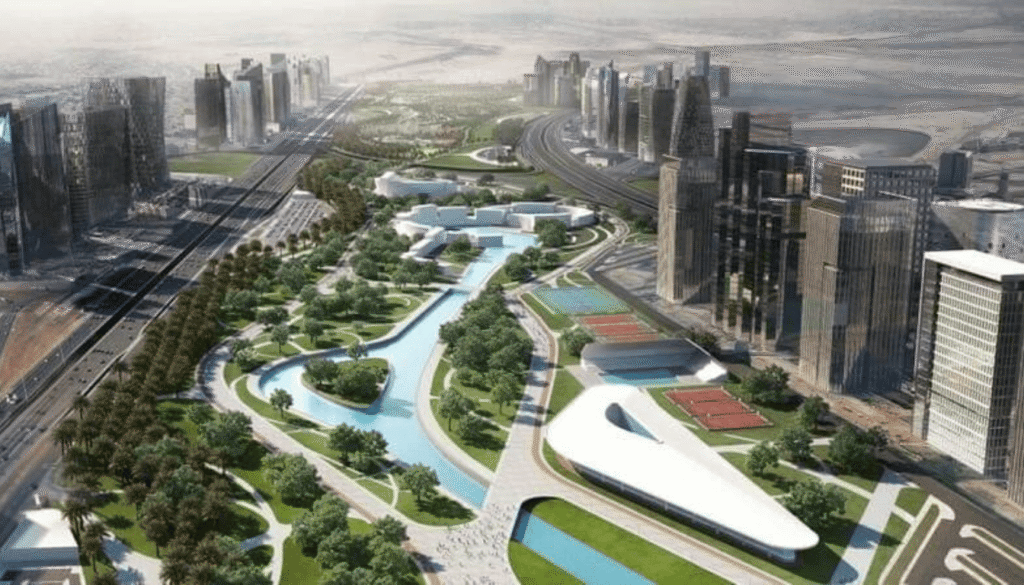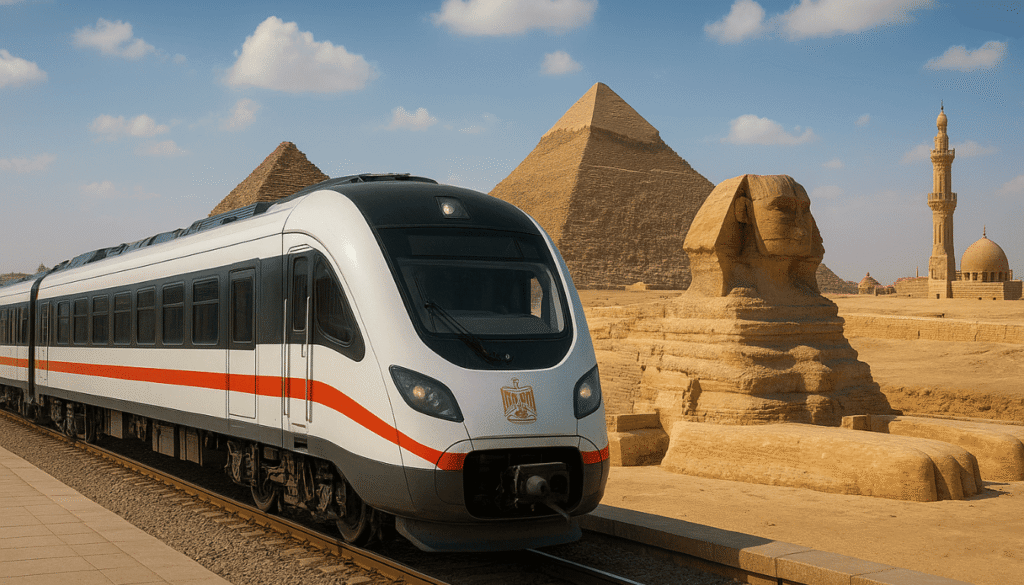Let me tell you something that most travel guides won’t mention: Egypt isn’t just about ancient history anymore. While everyone’s busy writing the same tired articles about the Pyramids and Luxor temples, something remarkable is happening beneath the surface. The country is in the middle of a massive infrastructure overhaul that’s completely changing how tourists experience this incredible destination.
I recently came across some fascinating numbers that paint a clear picture. Egypt welcomed 15.7 million tourists in 2024, and the government has set an ambitious target of 30 million annual visitors by 2030. That’s nearly double the current numbers. But here’s what makes this goal realistic rather than wishful thinking: they’re actually building the infrastructure to support it.
“Plan Your Egyptian Getaway Now – Flights and Hotels in One Easy Step!”
The Transportation Backbone: Why Egypt’s High-Speed Rail Changes Everything
Remember the last time you planned a trip to Egypt? You probably looked at the map and thought, “Wow, getting from Cairo to Luxor, then over to Hurghada, then maybe up to Alexandria… that’s going to eat up half my vacation in travel time alone.” That calculation is about to become obsolete.
The Habi Project represents Egypt’s answer to a problem that’s plagued tourism for decades: connectivity. This isn’t some minor upgrade to existing rail lines. We’re talking about a completely new high-speed rail network designed specifically to link major tourist destinations in ways that simply weren’t possible before.
The Red Sea to Mediterranean Corridor: Connecting Egypt’s Coasts
The first line runs east to west, from Ain Sokhna on the Red Sea all the way to Marsa Matrouh on the Mediterranean coast. What makes this route brilliant is how it threads through the New Administrative Capital, Cairo, Giza, and Alexandria along the way.
Think about what this means practically. You could start your morning at the Grand Egyptian Museum near the Pyramids, hop on a train, and be relaxing on a Mediterranean beach by late afternoon. Or reverse it—spend a few days diving in the Red Sea, then head straight to Cairo without the usual chaos of highway traffic or flight connections.
Marsa Matrouh, in particular, benefits enormously from this connection. It’s always been this beautiful Mediterranean destination that few international tourists visit simply because getting there was such a hassle. The HSR changes that completely.
The Nile Valley Express: Cairo to Abu Simbel
The second line is what I call the “cultural spine” of Egypt. It connects Greater Cairo with Abu Simbel, passing through Luxor and Aswan—essentially linking every major pharaonic site in the country into one seamless journey.
Here’s where the time savings become dramatic. The current journey from Cairo to Aswan takes anywhere from 12 to 14 hours by conventional train. The high-speed rail cuts this to a fraction of that time, which means you can actually visit places like Abydos or Dendera on day trips rather than committing to overnight stays and complicated logistics.
Abu Simbel at the end of this line is the real winner. Right now, most tourists visit it on rushed day trips from Aswan, often by plane or in convoys. Direct rail access opens up the possibility of spending proper time there, maybe catching both sunrise and sunset over those massive statues of Ramesses II.
The Culture-to-Coast Connection: Luxor to the Red Sea
The third line might be the most transformative for typical tourist itineraries. Running from Luxor to Safaga and Hurghada, it solves a problem that’s frustrated travelers for years: the awkward gap between cultural sites and beach resorts.
Previously, if you wanted to combine temple visits with Red Sea diving, you were looking at a grueling bus ride or expensive domestic flights. The distances aren’t huge—Luxor to Hurghada is only about 280 kilometers—but the journey quality made it feel much longer.
Now picture this instead: spend three intensive days exploring the Valley of the Kings, Karnak Temple, and Luxor Temple. Then, instead of collapsing from exhaustion, you board a comfortable high-speed train and arrive at your Red Sea resort in time for dinner. The government projects this line alone will boost tourism traffic and local business revenue by 20 to 30 percent. That’s not just good for the economy—it means better services, more options, and more developed infrastructure for visitors.
Beyond Transportation: The Supporting Infrastructure
The rail network is the star of the show, but it doesn’t work in isolation. Egypt is investing in a whole ecosystem of tourism infrastructure that makes the ambitious 2030 target actually achievable.
Hotel Capacity: Building for the Future
The Egyptian government has allocated EGP 50 billion specifically for financing hotel expansion in key destinations like Luxor, Aswan, and across the Red Sea coast. This isn’t about building more budget hostels—though those matter too. It’s about creating the kind of varied accommodation options that different types of travelers need.
Business travelers want reliable Wi-Fi and conference facilities. Families need larger rooms and kid-friendly amenities. Adventure tourists prefer something simple but well-located. The expansion program aims to cover all these bases, ensuring that when those 30 million tourists arrive, there’s actually somewhere for them to stay.
The Grand Egyptian Museum: A Destination in Itself
You can’t talk about Egyptian tourism infrastructure without mentioning the Grand Egyptian Museum. Positioned right next to the Pyramids of Giza, this isn’t just another museum—it’s being built to be one of the largest archaeological museums in the world.
The strategic placement matters enormously. Instead of tourists having to choose between visiting the Pyramids or seeing museum collections, now they can experience both in a single, connected visit. The museum is expected to draw millions of visitors annually on its own, which creates a concentration of tourist activity that justifies even more infrastructure investment in the Giza area.
What’s particularly smart about the GEM is how it addresses capacity issues at existing sites. The Egyptian Museum in downtown Cairo has been overcrowded for years, with its incredible collection crammed into a building never designed for modern tourist volumes. Shifting much of that collection to a purpose-built facility with proper climate control, accessibility features, and visitor amenities raises the entire experience quality.

Explore Giza Pyramids,Sphinx and the New Grand Egyptian Museum
The Red Sea Megaproject: Creating Entirely New Destinations
Here’s where things get really ambitious. The Red Sea Development Project, with its $18.5 billion budget, isn’t just improving existing resorts—it’s creating entirely new tourist destinations from scratch.
The centerpiece is Ras El-Hekma, designed as a completely new city focused on high-end tourism. When I first read about this, I was skeptical. Egypt already has Hurghada, Sharm El-Sheikh, and Marsa Alam. Does it really need another Red Sea resort?
But the numbers suggest there’s demand. The project aims to attract 8 million annual visitors to this Red Sea cluster alone. That’s roughly half of Egypt’s current total tourism numbers, focused on a single region. The key is that it’s being designed with modern sustainability standards, luxury accommodation, and—crucially—those high-speed rail connections that make it accessible from Cairo, Luxor, and Alexandria.
What This Infrastructure Revolution Means for Real Travelers
Let me break down why this matters to you specifically, depending on what kind of trip you’re planning.
For First-Time Visitors
If you’re planning your first Egypt trip, this infrastructure buildout is genuinely exciting. The classic tourist route—Cairo, Luxor, Aswan, maybe a few days by the Red Sea—becomes far more comfortable and far less time-consuming.
Previously, you’d need at least ten days to do this properly, and you’d spend a substantial portion of that time in transit. With the HSR network, you could realistically cover the same ground in seven days and actually feel relaxed rather than exhausted. That’s not just more convenient; it changes the entire emotional experience of the trip.
For Culture-Focused Travelers
If you’re the type who wants to go deep on ancient Egyptian history, the infrastructure improvements unlock destinations that were previously too difficult to reach.
Take Abydos, for example. The Temple of Seti I there has some of the most beautifully preserved reliefs in all of Egypt, including the famous king list. But it’s located awkwardly between Luxor and Cairo, making it a challenging day trip from either. Better rail connections make these secondary sites far more accessible, which means you can build itineraries that go beyond the greatest hits.
For Beach and Adventure Travelers
The Red Sea has always been one of the world’s premier diving and snorkeling destinations, but it’s been frustratingly isolated from the rest of Egypt’s attractions. The infrastructure investments change this calculation entirely.
Destinations like Wadi El Gemal National Park, with its pristine dive sites and sea turtle populations, or Al-Qusair with its historic Ottoman fortress, become viable additions to broader Egypt itineraries rather than being standalone beach vacations. The Luxor-to-Red-Sea rail line is specifically designed to enable this culture-plus-coast combination.
For Digital Nomads and Long-Term Travelers
Egypt is actively positioning itself for the digital nomad market, particularly in places like Dahab and El Gouna. The infrastructure investments support this in ways that might not be immediately obvious.
Reliable transportation connections matter enormously when you’re planning to stay somewhere for weeks or months. You want to know you can easily get to an airport for visa runs, or take weekend trips to break up work routines, without the journey becoming an exhausting ordeal. The HSR network, combined with investments in digital connectivity, makes Egypt competitive with more established nomad destinations.
The Technical Side: What Makes This Infrastructure Smart
I know this section might seem dry, but bear with me—understanding how this infrastructure is being designed helps explain why it’s likely to succeed rather than becoming another well-intentioned project that doesn’t deliver.
Integrated Planning
The key insight is that Egypt’s planners aren’t just building rail lines in isolation. They’re thinking about the entire tourism ecosystem.
High-speed rail stations are being positioned near major hotels and tourist sites. The New Administrative Capital, for instance, is being built with its rail connection as a core feature from day one, not as an afterthought. The Red Sea megaproject includes rail connectivity in its fundamental design.
This integrated approach matters because it avoids the “last mile” problem that plagues many transportation projects. What good is a fast train if you then need an hour-long taxi ride to reach your actual destination? Egypt’s planning appears to minimize these friction points.

“Visit The National Museum of Egyptian Civilization”
Capacity Matching
The hotel expansion program running parallel to the rail network shows that someone did the math on capacity. There’s no point building transportation to move 30 million tourists annually if there aren’t enough hotel rooms for them to sleep in when they arrive.
The EGP 50 billion hotel financing initiative is specifically targeted at the destinations that the HSR network will make more accessible. This coordination between transportation capacity and accommodation capacity is exactly the kind of systemic thinking that makes ambitious targets achievable.
Phased Implementation
Rather than trying to build everything at once and risk delays or cost overruns that could kill the entire project, Egypt is taking a phased approach. The 2026 operational phase for initial segments gives time to test systems, work out problems, and adjust plans based on real-world experience before full implementation by 2030.
This pragmatic timeline actually increases the likelihood of success. It allows tourist businesses to adapt gradually, train staff, develop new itineraries, and build the supporting services that tourists need.
Addressing the Practical Questions
Whenever I discuss Egypt’s infrastructure development with fellow travelers, certain questions come up repeatedly. Let me tackle the most common ones.
Is This Actually Going to Happen?
Fair question. Egypt has announced ambitious projects before that didn’t materialize as promised. What makes this different?
The answer is the sheer scale of committed investment and the fact that construction is already underway on multiple fronts. The Grand Egyptian Museum, after years of delays, is in advanced stages. The Red Sea Development has broken ground. The HSR network has moved beyond planning into active construction phases.
More importantly, these projects are tied to specific economic targets that the government has staked significant political capital on achieving. The 30 million tourist goal isn’t just a nice aspiration—it’s a core part of Egypt’s economic diversification strategy away from dependency on Suez Canal revenues and fossil fuels.
Will This Make Egypt More Expensive?
Another valid concern. Infrastructure improvements often lead to price increases, which could price out budget travelers who’ve long appreciated Egypt’s affordability.
The reality is likely to be more nuanced. Yes, certain areas—particularly new developments like Ras El-Hekma—will target the luxury market with corresponding price points. But Egypt’s tourism sector is diverse enough that budget options will continue to exist, particularly in established destinations.
In fact, better infrastructure might actually reduce some costs. When transportation is easier and more efficient, you save money on complicated logistics. When hotel supply increases faster than demand, market competition can keep prices reasonable. The HSR itself, if priced competitively with current options, could actually reduce transportation costs compared to domestic flights.
What About Overcrowding?
Here’s an interesting paradox: better infrastructure could actually reduce crowding at major sites, even as total tourist numbers increase.
How? By making secondary destinations more accessible. Right now, most tourists concentrate in a handful of locations because those are the only places with decent infrastructure. As connectivity improves, tourists naturally spread out more. Someone who might have spent their entire week in Cairo and Luxor could now easily add Siwa Oasis or Marsa Matrouh to their itinerary, distributing the tourist impact more evenly.
The Grand Egyptian Museum specifically addresses overcrowding by providing a larger, better-designed space for Egypt’s museum collections. This reduces pressure on the existing Egyptian Museum and provides a better experience for everyone.
Looking Ahead: What This Means for Egypt’s Tourism Future
Step back for a moment and consider what all this infrastructure development signals about Egypt’s position in global tourism.
The country is making a clear statement: it wants to compete not just on the strength of its ancient monuments—which, let’s be honest, aren’t going anywhere—but on the quality of the tourist experience. Comfortable transportation, varied accommodation options, accessible secondary sites, and modern facilities are investments in competing with destinations worldwide.
This is particularly important as global tourism evolves. Modern travelers increasingly expect seamless experiences. They want to spend their vacation actually enjoying destinations, not wrestling with complicated logistics or enduring uncomfortable journeys between sites.
Egypt’s infrastructure push positions it to capture this market effectively. The combination of world-class ancient attractions with modernized visitor infrastructure is genuinely compelling.
The Smart Traveler’s Perspective
If you’re planning an Egypt trip, here’s my honest take on timing.
The next few years, from 2025 through 2027, might actually be the sweet spot. Infrastructure is improving, making travel easier, but the destinations haven’t yet been discovered by the masses that will inevitably arrive once word gets out about how accessible everything has become.
Places like Siwa Oasis, Fayoum, and Wadi El Gemal—which the infrastructure improvements will make far more accessible—still retain their relatively undiscovered character. Visit now, and you experience them before they become mainstream must-see destinations.
At the same time, you benefit from the infrastructure that’s already been completed. The Grand Egyptian Museum is opening. Early phases of the HSR network are becoming operational. Hotel capacity is expanding. You get the improved experience without the crowds that will arrive once Egypt hits that 30 million tourist target.
Final Thoughts
Egypt’s infrastructure transformation represents something genuinely significant in global tourism. This isn’t a destination resting on its laurels, banking on the fact that people will always want to see the Pyramids regardless of how difficult the journey is.
Instead, it’s a country actively investing in creating the kind of comprehensive, high-quality tourism experience that modern travelers expect. The high-speed rail network, hotel expansion, mega-projects, and supporting infrastructure all work together to transform Egypt from a destination you endure to reach its ancient wonders into a place where the journey itself becomes part of the pleasure.
For travelers, this creates opportunities that simply didn’t exist before. Itineraries that were once exhausting become enjoyable. Destinations that required serious dedication to reach become viable additions to standard trips. The entire country opens up in ways that make Egypt not just a once-in-a-lifetime destination, but a place worth returning to repeatedly to explore different regions and experiences.
The infrastructure is being built. The connections are being made. The capacity is being created. The only question is: will you visit before everyone else figures out how good this is about to become?
Planning your Egypt adventure? Start researching the HSR routes that connect your must-see destinations. Book accommodations in advance, especially for 2026-2027 when infrastructure improvements accelerate but crowds haven’t yet arrived. And most importantly, look beyond the classic sites—this new infrastructure unlocks the entire country in ways that were never possible before.
“Luxor hot air balloon ride Experience + Valley of the Kings + Queen Hatshepsut Temple one-day tour“

